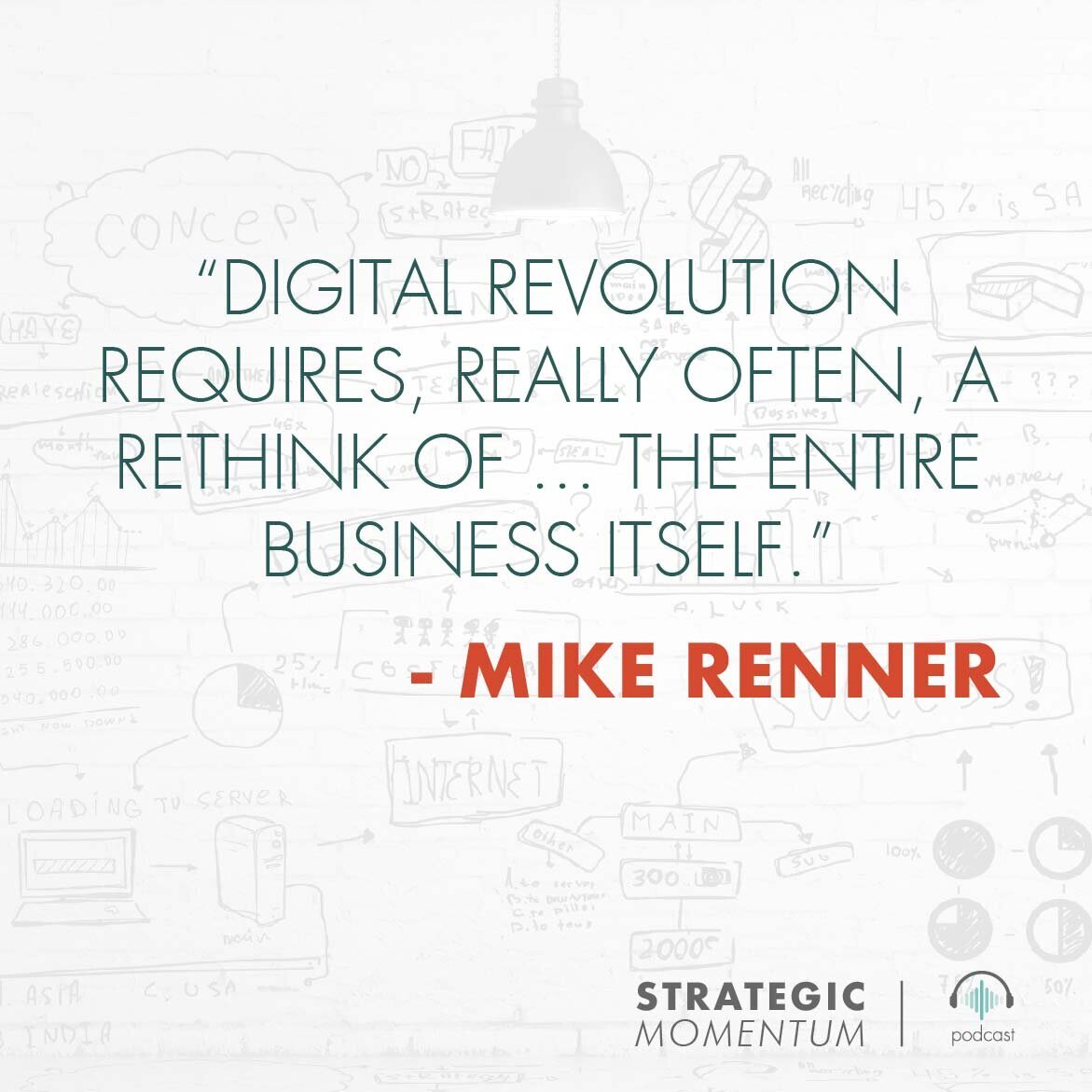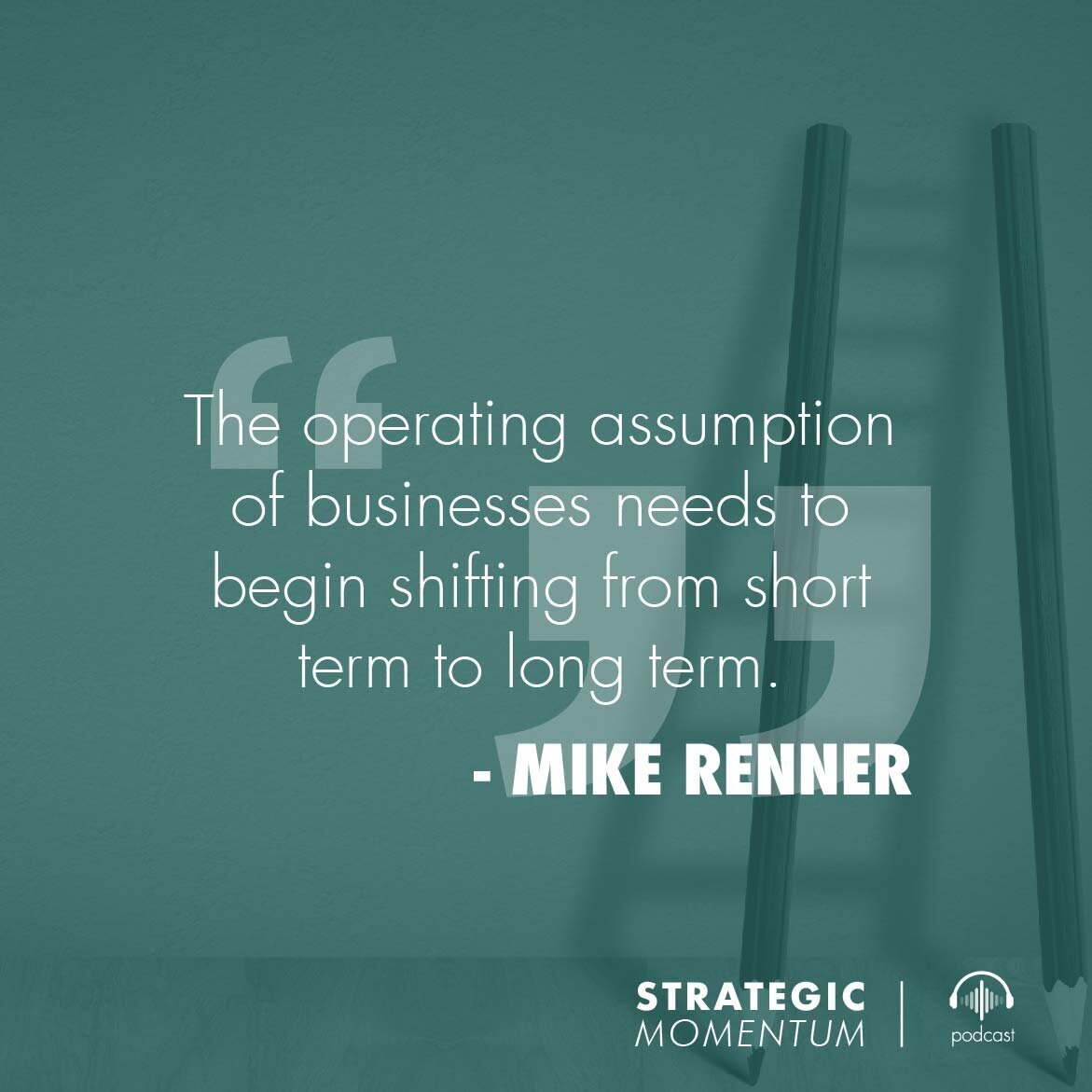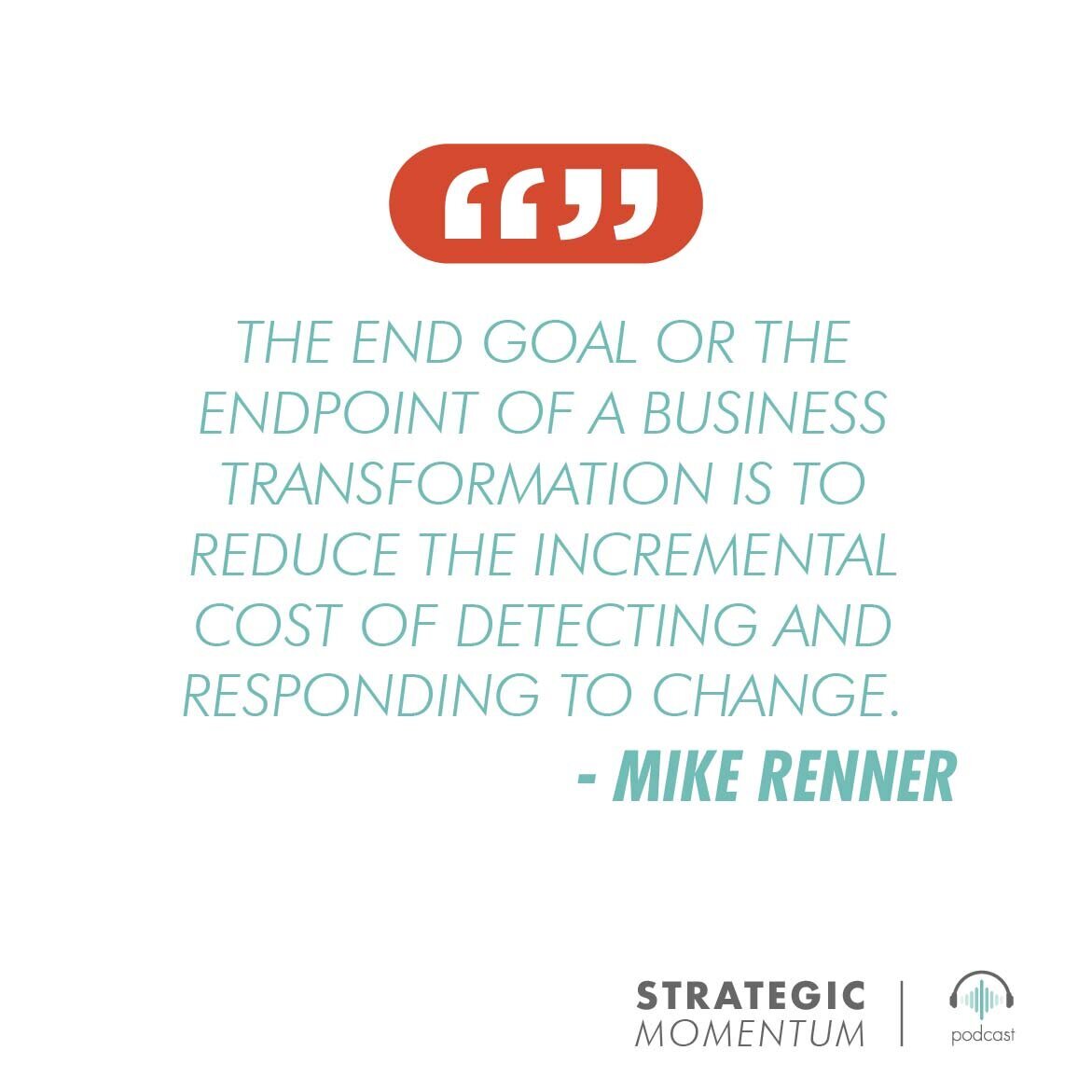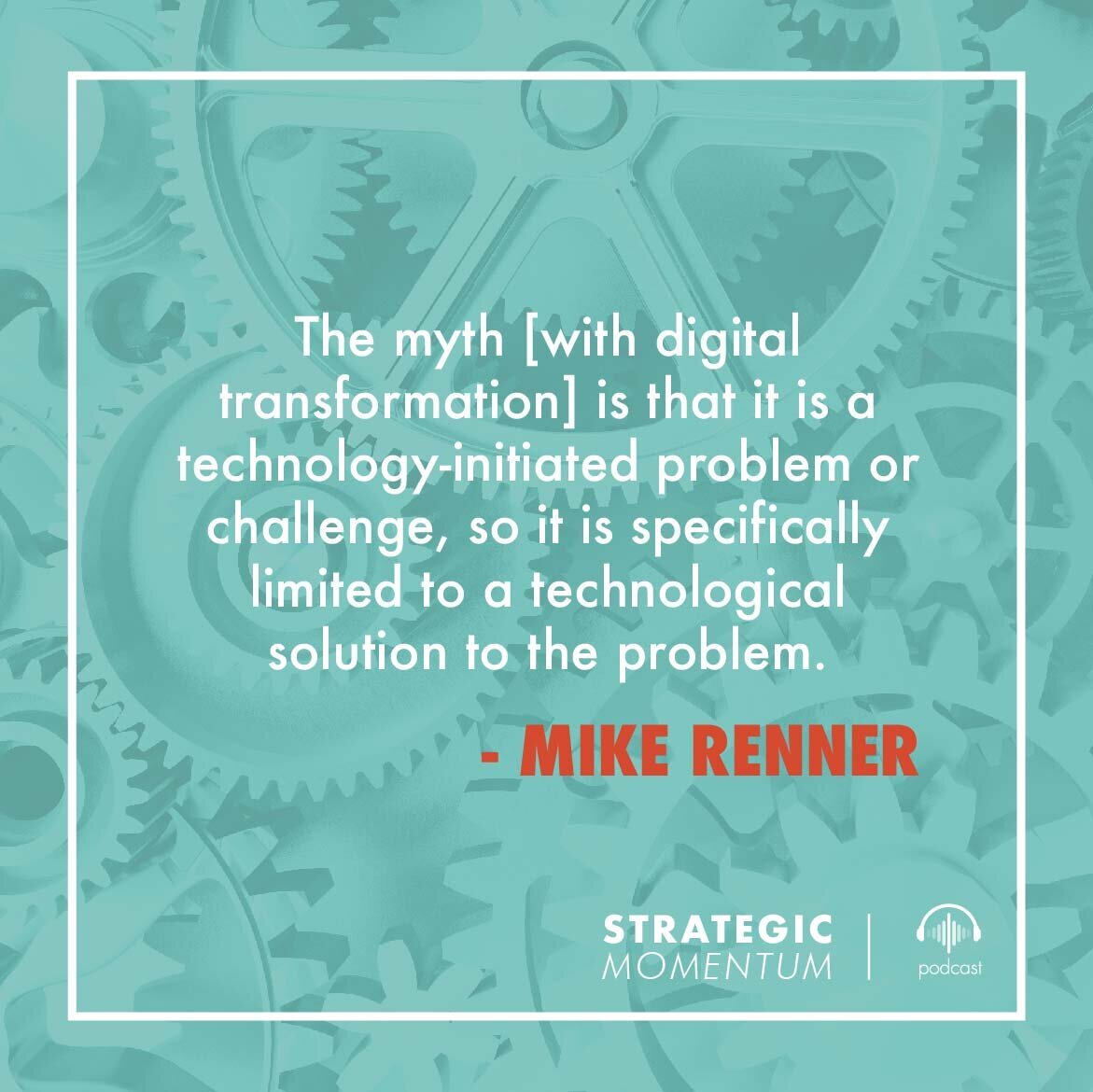Ep. 8 - Digital Transformation = Business Transformation
Find Us Wherever You Listen To Podcasts
The Digital Revolution has brought about
fundamental changes in the way businesses operate inside and out much like the Industrial Revolution. As a result, organizations have to undertake a ‘digital transformation,’ which often requires rethinking the business itself.
Mike Renner has over 20 years of executive management experience leading technology services and consulting companies that focus on aligning everything within a business to create exceptional value around technology. As CEO of MPRE Digital, a digital transformation consultancy, he focuses on bringing Digital Products, Customer Experience, and Data/Analytics to the core of his clients’ businesses.
Mike has seen, time and time again, the impact of technology on an organization’s value chain. For many companies, adapting to the disruption is still a struggle and there is no clear path forward. Some believe that, since this is a technology-initiated problem, it is limited to a technology-oriented solution. That, however, is a complete myth.
Digital Transformation really means a Business Transformation – much like what happened in the Industrial Revolution
In today’s climate, with change and disruption of industries being commonplace, companies have no choice but to undergo a ‘digital transformation.’ But defining what it takes to specifically evolve a business is often ill-defined and challenging.
Many business leaders are struggling. This stems from a lack of understanding around 1) what’s fundamentally impacting their business, 2) fear as a result of this lack of understanding, and 3) resistance to change, specifically in assessing and measuring financial performance.
What companies need to realize is that this transformation involves an entire re-think of the business, and it starts with a fundamental analysis of their value chain – is it being disrupted? How? Why? Where are there new opportunities? What will it cost? How long will it take?
Mike likes to use the analogy of the Industrial Revolution as a relevant point of comparison to help leaders see the factors, implications, and outcomes involved with this shift.
He defines five key elements:
Reordering of value chains
A difference in methods and processes
A shift in corporate culture
Investment in new infrastructure
Investment in capital with an expectation of return
Each tenet needs to be evaluated and reconsidered in the context an organization’s business goals and dynamics to set the course for the appropriate transformation.
The goal - Reduce the incremental cost of detecting and responding to change
Undertaking a digital transformation involves shifting a business’ operating assumptions.. It can no longer be about the near-term performance of investments – They need a long-term view, and implicit in that is redefining their goals. With the continuous change in one’s market and in customer behavior, the goal should be about reducing the incremental cost of detecting and responding to change, in order to be successful.
Key Takeaways:
A digital transformation (which needs to be a business transformation) starts with a detailed assessment of where you are – What is happening in your value chain? What technology or other dynamics are driving those changes? What are the threats and opportunities, given the assessment of the assets that you have of your business today? Are you willing to cannibalize your business to take advantage of those opportunities?
By doing this analysis, you will actually identify some tangible actions where you can ask ‘what's the value of doing this’, ‘what is the cost of doing this’, ‘what's the return’, and ‘how long does it take to get that done’. But if you don’t do this introspection and analysis, you won’t have a framework to help you move forward.
This transformation also requires a mindset, cultural, and behavioral shift – starting in the C-Suite; it not only involves a shift in how you evaluate business performance (traditionally ROI based on 18-24 month time horizons) but also the way you work.
Mindset - Change from short term to longer term with the goal of identifying, detecting, and responding to change within the organization. This ultimately will create predictability.
Incrementality - It’s almost impossible to transform an entire business in one fell swoop. Start small with a few things to start you on that path.
Customer-centric alignment - It’s critical to keep a pulse on what customers need and connect those activities to necessary, seamless processes within an organization. Although activity may occur in silos within your business, everything you do is connected in the eyes of the customer.
Change the way you work - Delegation, accountability, and responsibility also change within an organization given the rapid and continual evolution around customer needs and behaviors. This overall behavioral change isn't something that is taught – “by and large it is something that is caught.”
When helping other organizations go through this transformation, Mike’s approach is “to model it and bring the clients and individuals who are part of that domain, whatever area that we're talking about, and actually set it up, operate it, model it, and integrate them into that model so that they actually experience it.”
You have to invest in the right digital infrastructure to even have a digital business... This requires the executive team getting oriented around the goal of the investment, which is about protecting the business in the long term. But then you really have to start on a very incremental basis.
As an executive, you need to see this as a marathon vs. a sprint. As such, think of your strategies in segments because each business and their corresponding market will have its own cadence.
Resources:
Connect with Mike on LinkedIn
Subscribe to the Strategic Momentum podcast:
On Stitcher Radio
On Spotify











